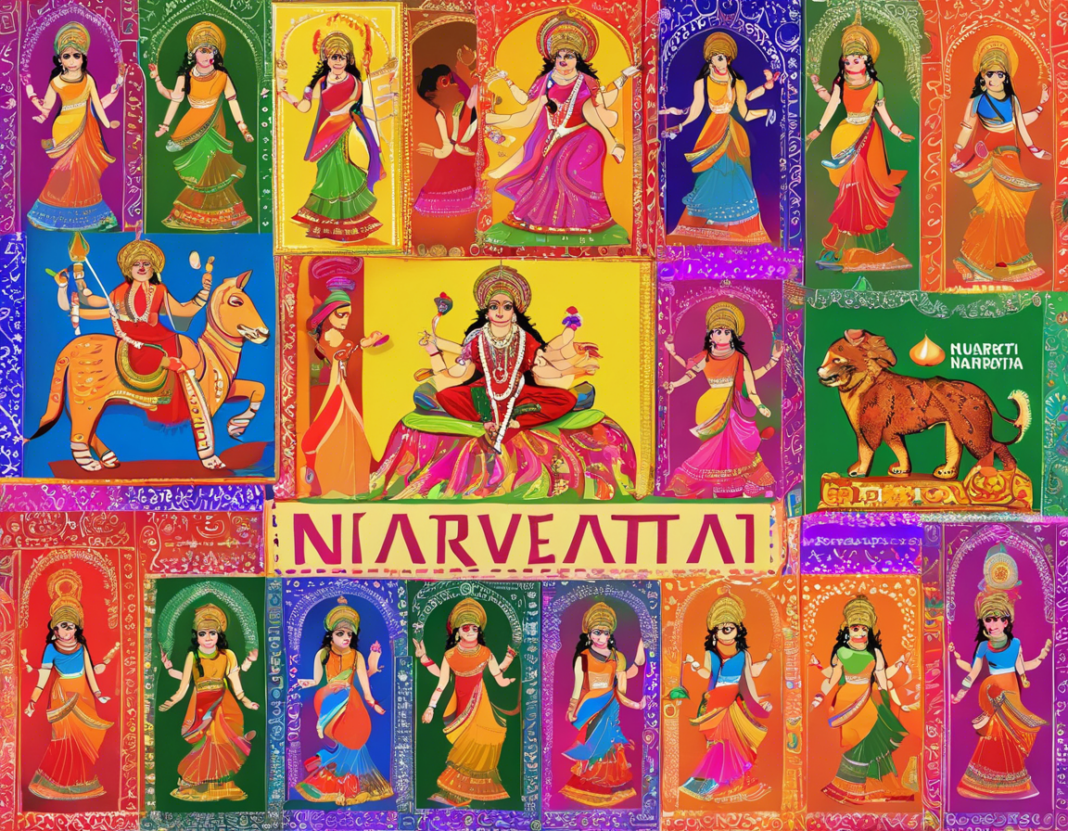Each year, devotees of the Hindu goddess Durga celebrate the festival of Navratri with great fervor and devotion. Navratri, which translates to “Nine Nights,” is a sacred festival that spans over nine days and nights, during which time different forms of the goddess Durga are worshipped. One significant aspect of Navratri celebrations is the tradition of wearing clothes of specific colors on each day. These Navratri colors are believed to hold special significance and represent different aspects of life and the goddess Durga herself.
Significance of Navratri Colors:
The colors of Navratri are not just a visual spectacle but are deeply rooted in symbolism and tradition. Each color is associated with a specific day and form of the goddess Durga. By wearing the designated color of each day, devotees seek to invoke the blessings of the goddess associated with that particular day and channel the energy and power she represents.
Navratri Colors for 2023:
-
Day 1 (Pratipada) – Gray: Gray symbolizes the strength and stability needed to embark on a new journey.
-
Day 2 (Dwitiya) – Orange: Orange represents energy and optimism, instilling enthusiasm and vitality.
-
Day 3 (Tritiya) – White: White signifies purity, peace, and spirituality, bringing clarity and focus.
-
Day 4 (Chaturthi) – Red: Red symbolizes power, passion, and courage, invoking the warrior spirit within.
-
Day 5 (Panchami) – Royal Blue: Royal blue represents intelligence and wisdom, enhancing communication and creativity.
-
Day 6 (Shashthi) – Yellow: Yellow symbolizes happiness, positivity, and prosperity, bringing joy and abundance.
-
Day 7 (Saptami) – Green: Green signifies growth, harmony, and fertility, promoting balance and renewal.
-
Day 8 (Ashtami) – Peacock Green: Peacock green combines the stability of green with the vibrancy of blue, fostering a sense of healing and rejuvenation.
-
Day 9 (Navami) – Purple: Purple represents luxury, power, and spirituality, embodying the essence of divine grace.
Tips for Incorporating Navratri Colors in Your Outfits:
- Plan ahead and organize your wardrobe to ensure you have the right colors for each day.
- Mix and match different clothing pieces to create diverse outfits that incorporate the designated colors.
- Accessorize with jewelry, scarves, or shoes in the Navratri colors to complement your outfit.
- Experiment with makeup in hues that match the daily colors to complete your look.
- Don’t worry if you don’t have the exact shade – opt for similar tones or accents to stay aligned with the color theme.
FAQs about Navratri Colors:
-
What is the significance of wearing Navratri colors?
Wearing Navratri colors is believed to attract positive energies and invoke the blessings of the goddess Durga associated with each day. -
Can I wear different shades of the Navratri colors?
Yes, while it’s ideal to wear the specific color of the day, you can opt for variations or tones that closely resemble the designated color. -
Do I need to follow the Navratri color tradition strictly?
Participating in the Navratri color tradition is a personal choice, and while it enhances the festive spirit, it is not obligatory. -
What if I don’t have the designated color for a particular day?
If you lack the exact color, you can incorporate elements such as accessories, makeup, or accents in the Navratri color to align with the tradition. -
Are there any taboos or restrictions related to Navratri colors?
There are no strict taboos, but it is advisable to avoid wearing black during Navratri, as it is considered inauspicious during this auspicious period.
Navratri colors are not just a visual spectacle but a sacred tradition that adds depth and meaning to the celebration of this auspicious festival. By embracing the designated colors each day, devotees can enhance their spiritual connection to the goddess Durga and invite prosperity, harmony, and blessings into their lives.
